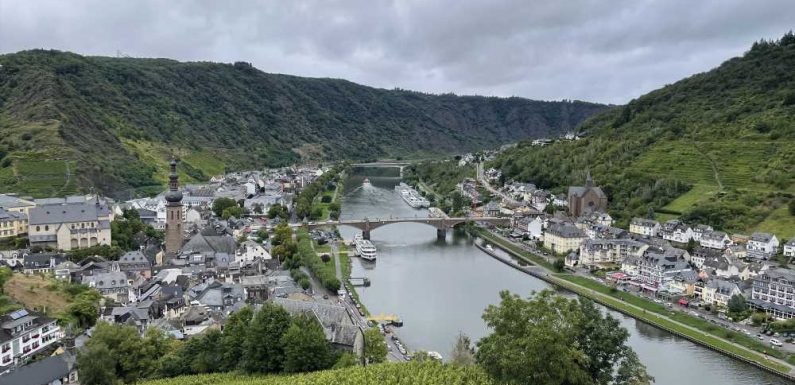
When someone as prominent and respected in river cruise circles as Rudi Schreiner starts handing out superlatives, you listen.
And according to the Austrian-born industry stalwart and co-founder and president of AmaWaterways, the Moselle River is the most beautiful waterway in central Europe.
“It’s a one-off itinerary that hasn’t gained a lot of popularity yet, and even to the Germans it’s something of a hidden gem,” Schreiner said as we sailed from Amsterdam into Germany on the Rhine, headed for the Moselle, on the AmaLucia.
AmaWaterways offers three itineraries that sail the Moselle (or the Mosel in German). Most other river cruise lines also offer itineraries that include the river, such as Paris to Zurich or Strasbourg, France, to Frankfurt. We were sailing to Luxembourg.
Known for its wine region and its storybook setting, the Moselle is the ideal blend of the Rhine’s castlescapes and the vertical vineyards of Portugal’s Douro River. The region, best known for its rieslings, has a long history of winemaking that incorporates whites from dry to honeyed.
A tributary of the Rhine, the Moselle branches off at Koblenz, Germany, a city whose name originates from the Latin word for “confluence.” It flows for 339 miles through northeastern France, Luxembourg and western Germany.
Related Dispatches
- Dispatch, AmaLucia: Browsing breakfast a la carte
- Dispatch, AmaLucia: Fringe benefits with fewer passengers
Our itinerary doubled back along the Rhine after reaching Mainz, Germany, passing through multiple locks, bound for the German towns of Lahnstein on the Rhine and on to Cochem and Bernkastel-Kues along the Moselle.
Cochem is a medieval town with a pristine, 11th-century hilltop castle known as Reichsburg. This is the highlight of any tour here, and for those who don’t mind stretching their legs over cobblestones and an uphill incline, the walking tour gets you into the photogenic nooks of town. Lovingly maintained and guided by locals who now own the property, Reichsburg offers everything from witch lore to a hidden door — even views of a precarious-looking roller coaster in the distance.
Bernkastel-Kues (the town is split by the Moselle) is the timber-framed, fairy-tale port of brochure dreams, and it’s likely what comes to mind when you think of a charming German village withstanding centuries of time: preserved market square, check; precious alfresco cafes and shops, check; ancient castle on a hill and plenty of wine for when you come down, check and check. The legend even goes that the wine here cured the illness of a 14th-century archbishop and earned the vintner the lasting nickname of “doctor.”
So when recommending a picturesque river cruise to clients, don’t forget about the Moselle, the Rhine’s shy but scenic cousin.
Source: Read Full Article










